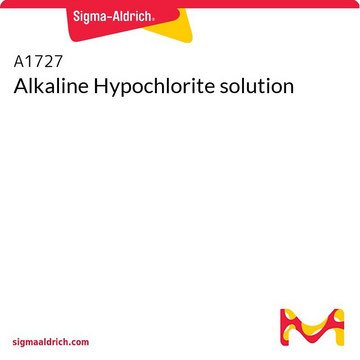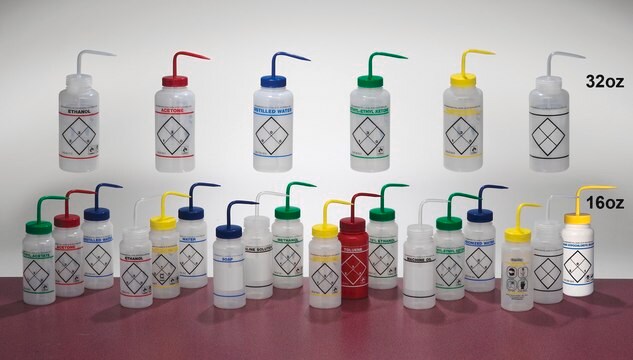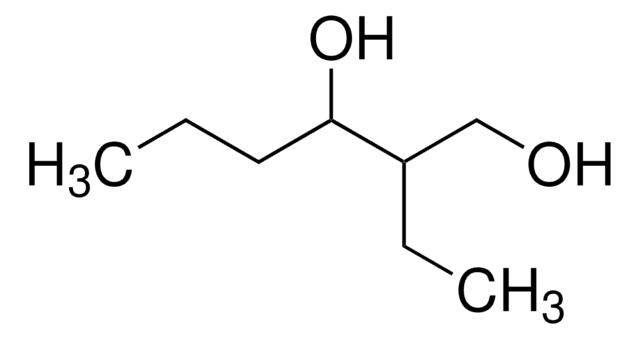425044
Sodium hypochlorite solution
reagent grade, available chlorine 10-15 %
About This Item
Recommended Products
grade
reagent grade
Quality Level
Agency
suitable for SM 4500 - NH3
vapor pressure
23.3 hPa ( 20 °C)
form
liquid
composition
available chlorine, 10-15%
reaction suitability
reagent type: oxidant
greener alternative product characteristics
Safer Solvents and Auxiliaries
Learn more about the Principles of Green Chemistry.
sustainability
Greener Alternative Product
concentration
10-15% (chlorine by Na2S2O3, titration)
bp
111 °C
density
1.206 g/mL at 25 °C
greener alternative category
storage temp.
2-8°C
SMILES string
[Na+].[O-]Cl
InChI
1S/ClO.Na/c1-2;/q-1;+1
InChI key
SUKJFIGYRHOWBL-UHFFFAOYSA-N
Looking for similar products? Visit Product Comparison Guide
General description
Application
Towards greener solvents for the bleach oxidation of alcohols catalysed by stable N-oxy radicals
Disclaimer
Signal Word
Danger
Hazard Statements
Precautionary Statements
Hazard Classifications
Aquatic Acute 1 - Aquatic Chronic 2 - Eye Dam. 1 - Met. Corr. 1 - Skin Corr. 1B
Supplementary Hazards
Storage Class Code
8B - Non-combustible corrosive hazardous materials
WGK
WGK 2
Flash Point(F)
Not applicable
Flash Point(C)
Not applicable
Choose from one of the most recent versions:
Already Own This Product?
Find documentation for the products that you have recently purchased in the Document Library.
Customers Also Viewed
Protocols
To ensure all cell culture procedures are performed to a standard that will prevent contamination from bacteria, fungi and mycoplasma and cross contamination with other cell lines.
Our team of scientists has experience in all areas of research including Life Science, Material Science, Chemical Synthesis, Chromatography, Analytical and many others.
Contact Technical Service








